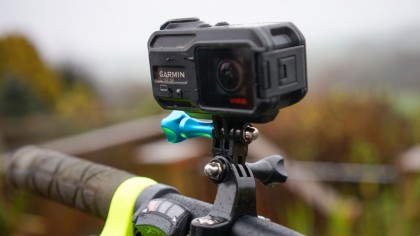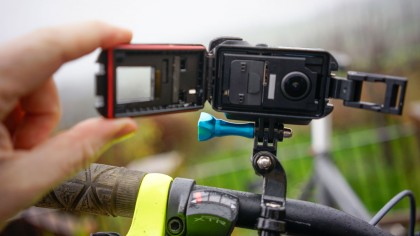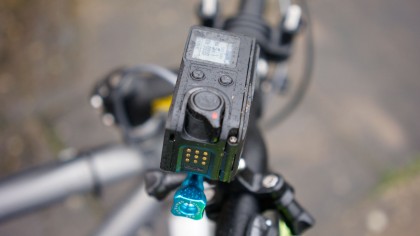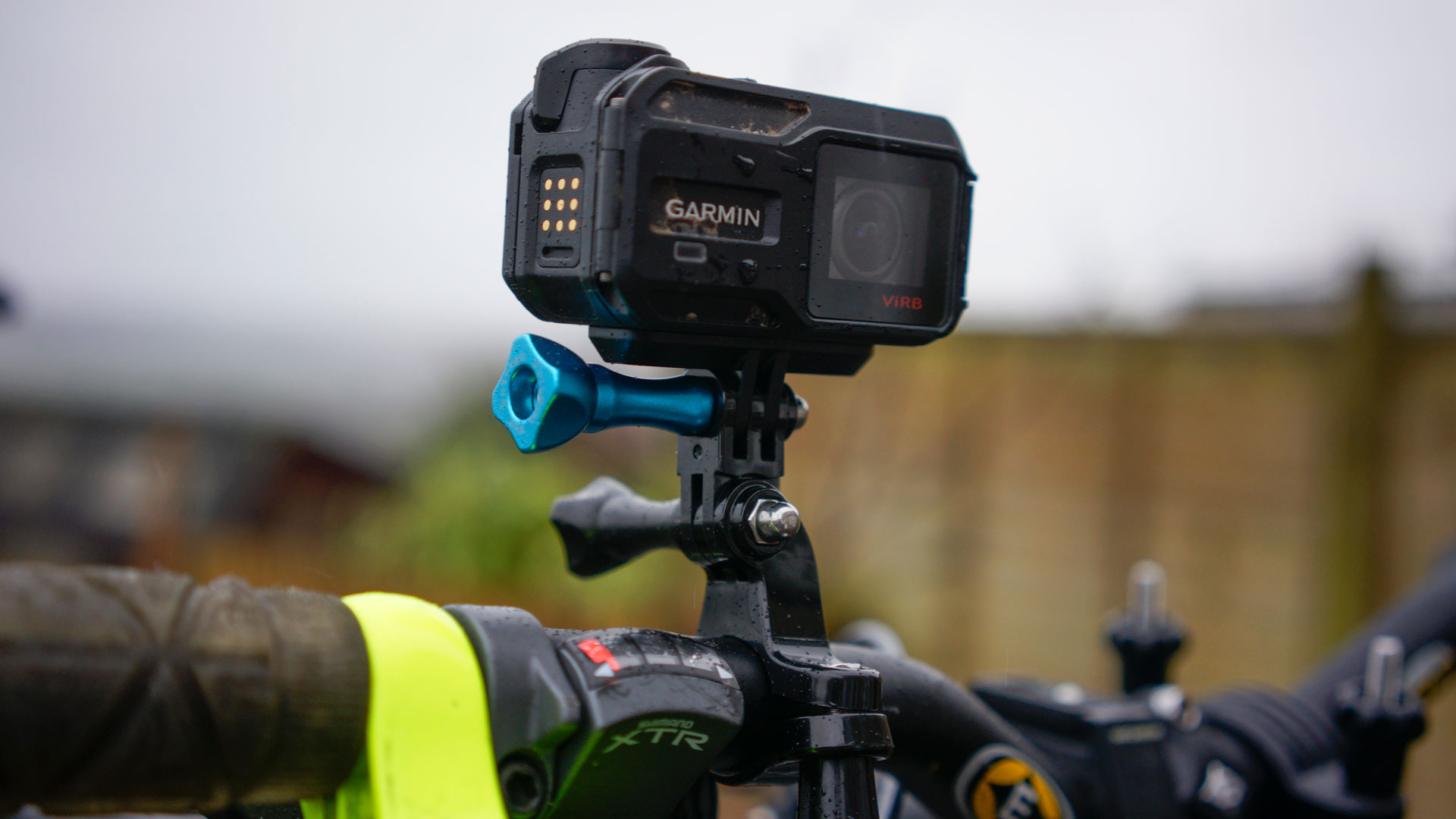Why you can trust TechRadar
Compared with Garmin's previous action camera the Virb Elite, every aspect of the XE's design is changed. There's no longer a handy screen on top, the side mounted sliding on/off switch has gone and most notably the shape is completely different.
The new design scraps the bullet cam style of the previous generation and instead adopts the more popular box design, although unlike most GoPro copycats, the Virb's style is unique. It's a long rectangular box which gives it a slightly lower yet longer profile than the GoPro Hero4 Black. The box style makes it far easier to chest mount than the old Virb Elite, but all other mounting options remain pretty much the same.


On the side of the body is a lever catch which is easy to release when intended but secure enough to make it extremely unlikely that it will be released accidentally. The door flips open to reveal the battery compartment, lens and memory card slot. By the side of the lens there's a slot for moisture strips, although I also found it handy place to stash an additional memory card when on dry land. Moisture strips are essential when using the camera in water as they help to prevent the lens from misting up. The lens built into the front of the casing is hydrophobic – it's designed to repel water droplets and smears. This protective layer does seem to work and also helps to prevent unwanted dirt from sticking to the lens in use. As always, though, it's a good idea to check the lens on a regular basis anyway.
Closing the door and fastening the catch seals the camera making it waterproof to 50m depth – this compares with the original Virb Elite's very limited 1m depth. On the exterior are three buttons and a lever. The two small push buttons access the menu and power, and these double as navigation buttons when the menus are active. The other button resembles a traditional camera shutter button with the sliding lever surrounding it. You simply push this to take a picture on the 12 million pixel sensor. However, when navigating menus this shutter button can be used to confirm selections.
Around this button is a switch lever that activates recording – switch it forward to start, back to stop. This lever will also automatically switch the camera on and start recording in one, so there's no need to use the separate power button when you're out on the trail. This design also makes it extremely easy to use the camera when wearing gloves and is a huge improvement over the all too common push button operation.

Another big change is the way the camera can be mounted. Previously this had been a proprietary design unique to Garmin, and although it worked well the number of mounts available when compared to the GoPro was limited. Garmin has thankfully changed the mounting design, so gone is the clip on cradle, now replaced by the more commonplace GoPro style mount. This change makes sense and enables the XE to be used with the vast selection of existing GoPro mounts already on the market.
Connectivity and charging for the Virb XE is unfortunately handled by Garmin's own proprietary USB connector, so this means that you need to carry the unique cable with you for charging rather than a more standard USB cable now adopted by the majority of other action camera manufacturers. As long as you can keep tabs on the cable then all's fine, but if you forget it or lose it a replacement will set you back a huge £17/$20.
The battery is a Li-Polymer type rated at 3.8v and 980mAh, in our test this supplied a good 1 hour and 40 minutes of use. This figure is just recording time at 1080p and doesn't include the time the camera was on stand-by, switching between settings or reviewing footage through an app connection which was all done on the same single charge. In comparison with the GoPro Hero4 Black, the XE enables a good 20-30 minutes more recording time at 1080 and 60fps.
Ali Jennings is the imaging lab manager for Future Publishing's Photography portfolio. Using Imatest Master and DxO Analyser he produces the image quality tests for all new cameras and lenses review in TechRadar's cameras channel. Ali has been shooting digital since the early nineties and joined Future's Photography portfolio back in 2003.
